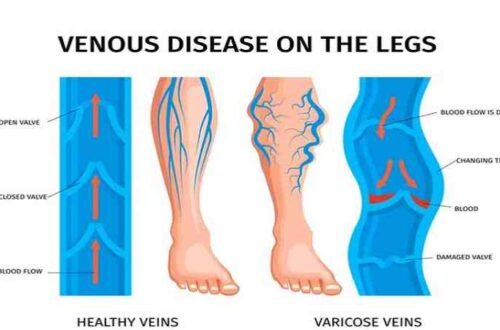Imagine a world where the concept of money as we know it no longer exists—a world where the need for currency, credit cards, and even digital wallets has disappeared. This might sound like science fiction, but the idea of a “dismoneyfied” society has been gaining traction in discussions about the future of our economy. This article explores what a dismoneyfied world might look like, the potential benefits and challenges of such a system, and how it could fundamentally change the way we live.
What Does “Dismoneyfied” Mean?
The term “dismoneyfied” refers to a hypothetical scenario where money, in all its forms, is no longer the primary means of exchange. Instead, society relies on alternative methods to facilitate trade, access resources, and distribute wealth. This concept is rooted in the idea that money, while a powerful tool for organizing economies, also brings about numerous social and economic inequalities. By eliminating money, proponents of dismoneyfication argue that society could become more equitable, sustainable, and humane.
The Vision of a Dismoneyfied World
In a dismoneyfied world, traditional economic transactions would be replaced by systems that emphasize direct exchange, community sharing, and resource-based economies. Here’s how such a world could function:
1. Resource-Based Economy
One of the most popular ideas associated with dismoneyfication is the resource-based economy (RBE). In an RBE, goods and services are distributed based on need rather than financial ability. Resources like food, housing, and healthcare would be freely accessible to everyone, with advanced technology managing the allocation and distribution of these resources efficiently.
In this system, the value of goods and services is determined by their utility and the resources required to produce them, not by a monetary price. For example, if a community needs fresh produce, automated systems could allocate land, water, and labor to grow the necessary crops without the exchange of money.
2. Barter and Direct Exchange
Another possible feature of a dismoneyfied world is a return to barter and direct exchange but on a much more sophisticated level than in ancient times. Modern technology, such as blockchain and smart contracts, could facilitate complex barter systems where individuals and communities exchange goods and services without the need for money.
For instance, if you’re a skilled carpenter, you could offer your services in exchange for medical care, education, or other goods that you need. Technology would ensure that these exchanges are fair and transparent, creating a network of trust within the community.
3. Universal Basic Services
A disneyfied society could also be supported by universal basic services (UBS), where essential services like education, healthcare, transportation, and internet access are provided to everyone free of charge. Instead of individuals paying for these services out of pocket, they would be funded collectively, possibly through automated systems that manage resources at the societal level.
In this model, the focus shifts from individual wealth accumulation to collective well-being. The goal is to ensure that everyone has access to the basic necessities of life, regardless of their financial status.
4. Time Banks and Social Credits
Time banks and social credits represent another innovative approach to a disneyfied economy. In a time bank, people exchange hours of labor instead of money. If you spend an hour teaching someone a new skill, you earn a credit that you can use to “buy” an hour of someone else’s time for a service you need.
Social credits could function similarly, with individuals earning credits for contributing to their communities or engaging in socially beneficial activities. These credits could then be exchanged for goods, services, or access to resources, fostering a culture of cooperation and mutual support.
The Potential Benefits of Dismoneyfication
The idea of a Disneyfied world is appealing for several reasons, especially when considering the limitations and challenges of our current money-driven economy.
1. Reduced Inequality
One of the most significant potential benefits of dismoneyfication is the reduction of economic inequality. In today’s world, wealth is concentrated in the hands of a few, leading to disparities in access to resources, opportunities, and quality of life. A disneyfied system, by design, would aim to distribute resources more equitably, ensuring that everyone has access to what they need to live a fulfilling life.
2. Environmental Sustainability
A disneyfied society could also be more environmentally sustainable. Our current economic system often prioritizes profit over environmental stewardship, leading to overconsumption, waste, and ecological degradation. In contrast, a resource-based economy would focus on the efficient use of resources, reducing waste, and encouraging sustainable practices.
By removing the profit motive, there would be less incentive to exploit natural resources for short-term gain, leading to more responsible environmental management.
3. Focus on Well-Being
Without the constant pressure to earn money, people could focus more on activities that contribute to their well-being and personal fulfillment. This could lead to a healthier, happier society, where individuals are free to pursue their passions, spend time with loved ones, and engage in creative or meaningful work.
4. Strengthened Communities
In a disneyfied world, the emphasis on direct exchange, community sharing, and mutual support could strengthen social bonds and foster a greater sense of community. People would be more likely to cooperate and collaborate, knowing that their well-being is interconnected with that of their neighbors.
This shift in focus from individual wealth accumulation to collective prosperity could lead to more resilient and supportive communities, where people feel a stronger sense of belonging and purpose.
The Challenges of Implementing Dismoneyfication
While the idea of a disneyfied world is intriguing, it also presents significant challenges that would need to be addressed for such a system to function effectively.
1. Transitioning from a Money-Based Economy
One of the biggest challenges would be transitioning from our current money-based economy to a disneyfied system. Money is deeply ingrained in our society, and many people may resist the idea of giving it up. Additionally, the global economy is highly complex, with countless interdependencies that would need to be carefully managed during the transition.
Developing the technology and infrastructure needed to support a disneyfied society would also be a monumental task. This includes creating systems for resource management, direct exchange, and universal basic services, all of which would need to be reliable, scalable, and secure.
2. Ensuring Fair Distribution
Another challenge would be ensuring that resources are distributed fairly in a disneyfied world. While the goal is to eliminate economic inequality, there is a risk that new forms of inequality could emerge, particularly if certain groups gain control over resource management systems.
Safeguards would need to be in place to prevent the concentration of power and ensure that everyone has equal access to resources. This could involve decentralized decision-making processes, transparency measures, and strong community oversight.
3. Maintaining Incentives for Innovation
In a disneyfied world, it would be important to maintain incentives for innovation and productivity. Our current economic system rewards entrepreneurs, inventors, and workers with financial gains, which drives innovation and economic growth. Without money, alternative incentives would need to be developed to encourage people to continue creating, inventing, and contributing to society.
This could involve recognition, social credits, or other forms of non-monetary rewards that acknowledge and encourage individual contributions to the greater good.
4. Addressing Human Nature
Finally, any move towards dismoneyfication would need to address human nature. People have diverse motivations, desires, and behaviors, and it’s unclear how a dismal system would accommodate these differences. For example, how would a society without money deal with issues like greed, ambition, or competition?
A successful disneyfied system would need to balance the need for social cooperation with individual freedom and personal aspirations, finding ways to channel human energy and creativity in positive directions.
Conclusion: Is Dismoneyfication the Future?
The concept of a disneyfied world challenges us to rethink our assumptions about money, wealth, and value. While it’s a radical idea that may seem far-fetched today, it raises important questions about the sustainability and fairness of our current economic system.
As technology continues to advance and societal values evolve, the possibility of moving towards a disneyfied society may become more feasible. However, the transition would require careful planning, significant innovation, and a willingness to embrace new ways of thinking about resources, exchange, and human potential.
Whether or not dismoneyfication becomes a reality, exploring these ideas can help us better understand the limitations of our current system and inspire us to create a more equitable and sustainable future. A world without money might be a long way off, but the vision of a society where resources are shared and everyone has what they need to thrive is one worth striving for.





